
Alan Wade
For the liberal minded chemistry student of the late 1960s – think mind blowing LSD – rye grass had a particular allure. Lysergic acid could be had by wicking a paddock rye grass wash – infected with fungal ergot of rye (Claviceps purpurea) – up a piece of blotting paper. One simply cut out the paper chromatography band that lit up under an ultraviolet lamp. But why recall this old narrative?
I have a vivid memory of a senior lecturer searching our laboratory shelves for stray bottles of diethylamine, one that an inventive student might react with the lysergic acid on that blotting paper to produce LSD (Figure 1). In those heady days, possessing LSD was a risk, however remote, that universities were not about to wear. Rest assured we were an honest bunch, more intent on a good training than on a good time, and there were never any reports of a student suffering an acid hit.
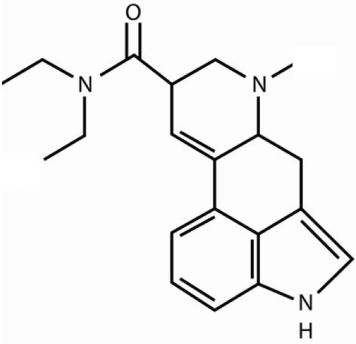
Figure 1 LSD (Lysergic acid diethyl amide), a key player in the counterculture ‘acid hit’ era of the 60s.
The Australian Honey Bee Industry Council (AHIB) (2025) paints clearly the short term solution to varroa. This amounts to a sensible use of chemicals to control the mite. Amongst these are organic acids that give Varroa, not the careless beekeeper, an acid hit.
However, the AHIB, as outlined in its fact sheet on the topic, is less optimistic about the future of the honey bee industry and the long term wellbeing of honey bees. For by treating mites with synthetic or naturally derived products, they note we will prevent bees ever evolving to become Varroa tolerant. The sad fact is that we may for perpetuate dependence on chemicals and high losses of honey bee colonies, a reality reflected in 60% colony wipeouts in North America over the winter just past (Conrad, 2025). With the further prospect of Tropilaelaps outgunning Varroa we might well ask ourselves whether keeping bees will remain feasible.
The present scenario
With this perspective, we might more closely appraise the chemical armoury at hand. Until now the global beekeeping industry has been dependent on their use, so we must recognise that this has failed dismally elsewhere and will eventually do so here. In a seminal overview of the present reliance on arachnicides to sustain American beekeeping practice, Oliver (2025) notes:
In parts of Canada, mites are nearly fully resistant to amitraz [Apivar/Apritraz], and in many US operations, mites are also exhibiting degrees of resistance. Unless there is another silver bullet in the pipeline that I haven’t heard of, commercial beekeepers are going to need to learn how to shift to other methods of mite control.
Peter Czeti, Westerham beekeepers, Primorski beekeepers, some Pacific Islanders, African keepers and the Cubans have got it right when it comes down to relying on miticides to solve the Varroa pestilence. In the long run only bees left to their own devices, or selected to manage the mites themselves, will truly flourish.
In this episode we examine the merits and detractions of the chemical maelstrom that would appear to be today’s, if not tomorrow’s, bee saviour. In this we are reminded of carbolic acid (phenol) mats once employed to drive bees from honey supers. That practise has, for the most part, been abandoned. Phenol is a skin burning, eye watering constituent of coal tar not to be messed with.
The AHIB has signalled that neither coumaphos (an organophosphate) nor τ-fluvalinate (a pyrethroid) will make the approved Australian miticide listing. Both have now failed to control the mite. There are large pockets of resistance to two recently approved arachnicides, amitraz (a triazine/formamidine) and flumethrin (another synthetic pyrethroid) in both the US and Europe and they too are being abandoned by keepers. So it is perhaps surprising they have gained Australian registration. As a group these chosen synthetics all had low mammalian toxicity and were great arachnicides — think dogs and kids with ticks, fleas and head lice. Despite the hype, especially about human toxicity, we are close to the end of the road for the synthetics – they are losing their potency, or soon will.
In The Acid Hits, we explore the practicalities of mite control using the alternative organic acids. Their use is being adopted by a local group of beekeepers though we neither endorse nor advocate following their use by other keepers. Like the officially endorsed arachnicides there are inherent dangers in handling products with pesticide status and we have only taken on this ‘own use’ strategy with shared decades of laboratory experience in handing the likes of formic and oxalic acid.
In a searching for a solution to the Varroa problem, let’s not go past Uncle Harry’s ingenuity in supplying the good oil to resolve a problem looking for a solution. For in Uncle Harry we discover how he employed a doubtful unguent to fix another dilemma, the insatiable thirst of one of these new-fangled tractors. After topping up the engine sump he recalls:
I gets goin’; after a while I notices a strange thing. There were a few trees on the cultivation, and every time I gets close to one, the tractor wants to steer towards it. It’s got me beat what’s causin’ it.’
‘I finishes the paddock and starts for home, and I might mention now that the cocky has a mob of useless dogs that were always chasin’ vehicles. Real bloody sooners they were, and out they come runnin’ and barkin’ at the tractor, and without warnin’ the machine bolts!’
‘I wonders what the hell is wrong. I steps on the brake and it don’t stop her, so I switches off the ignition. No result.’
‘I’m in a hell of a predicament and don’t know what to do. All of a sudden she swerves and heads for a big gum tree, gatherin’ speed all the while.’
‘I’m just about to abandon ship when a big goanna streaks across in front of me, goin’ like a sinner with the parson after him. The tractor swerves and starts to foller him, and its right on his hammer when he dives into a big holler log, which is too small to take the tractor. This bloody infernal machine rears up on the log and tears the sump clean off itself. As soon as the oil ran out of her she stopped dead.’
‘I gets down shakin’ like an emu eatin’ razor blades, and I suddenly notices the reptilian smell of the hot oil. It was goanna grease that the cocky had bottled up!’
‘Its hard to believe the yarn, ain’t it?’ Harry concluded as he scratched his moustache with the stem of his pipe.
‘You’ve told me about the dangers of goanna oil before’, I said.
‘That’s right’, the old boy answered, ‘And that’s why I prefer bullocks. You don’t need a lot of fancy oils and unguents to keep ‘em goin’. All that’s required is plenty of guts and greenhide.’
The goanna powered tractor
Keith Garvey 1981
There’s no denying that many natural beekeepers will try any magic potion to try to beat up the mite. The big question is: ‘Will that brew work?’
Glen Locke (2025) at Orora Valley Honey – near Coffs Harbour – presents an exemplary demonstration for recovering bees overrun by Varroa and American Foulbrood. In his view oxalic acid won’t cut it when Varroa runs out of control and that fogging the acid is pretty rough on bees. ‘Better’, he suggests ‘to use something reliable like Bavarol – a synthetic pyrethroid – with runs on the board’.
But are we getting good counsel or will those who have turned to social media to solve all of life’s problems get their just reward? Very sensibly we are warned off by the National Varroa T2M (varroa-to-management) Program about inventing your own remedy. However it is totally lost on me as to why – with due care – the proven organic acids available at a small fraction of the cost of the commercial products should not be employed. All said this does not mean that some natural products, particularly the mint oils, may also not be winners. Anyway we know that the simple organic acids, well applied, can be very effective – as will be explained – leave no contaminating residues and have not, like many of the synthetics, failed to work with repeated use.
So, costs aside, many beekeepers are keen to steer clear of the synthetic miticides just as many gardeners and horticulturalists are averse to pesticide use. Our small consortium of smite-the-mite keepers have come up with a system to knock over varroa mites not just the phoretics but also the mites emerging with eclosing bees. In so doing we are addressing several best treatment practises, OH&S chemical handling issues, and group purchasing to ameliorate cost, notably bulk ordering of chemicals and purchase of evaporator units. Who wants to own a 20 L drum of 85% formic acid, let alone take off the lid.
Only a handful of miticides have been approved for use in controlling Varroa (Table 1) in Australia: one synthetic pyrethroid (flumethrin, Figure 2a), one formamidine (amitraz, Figure 3a), one of several natural mint oil constituents (thymol) and two simple organic acids (formic acid and oxalic acid).
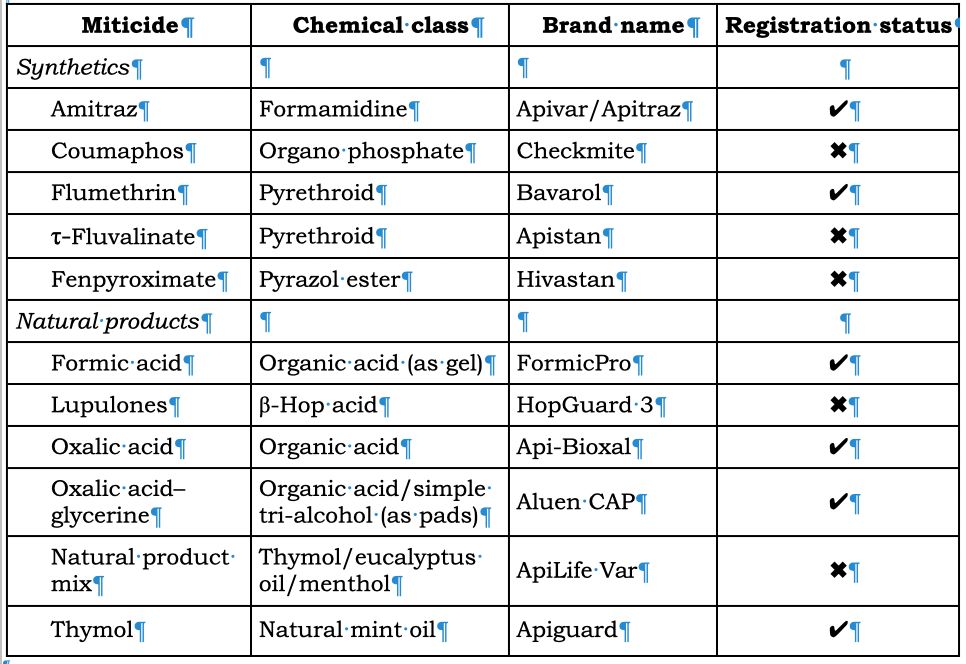
Table 1 Arachnicides approved for use in Australia to control Varroa based on USEPA listing.
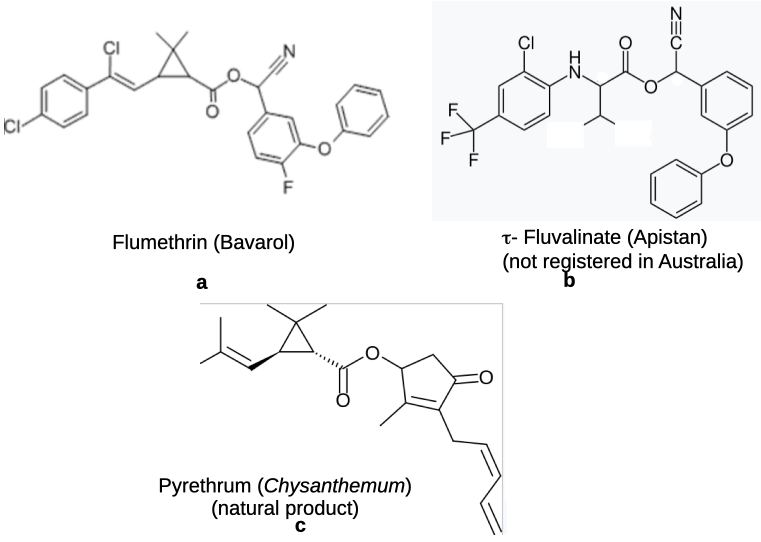
Figure 2 Synthetic and natural pyrethroids. Note nitrile and halobenzene moieties in the synthetic pyrethroids: (a) Bavarol now in wide use; (b) Apistan largely failed overseas; and (c) natural pyrethrum.
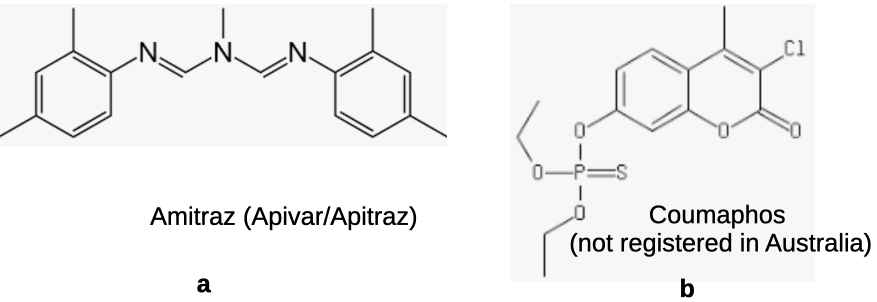
Figure 3 Other miticides to which mites have achieved resistance: (a) amitraz an effective miticide likely to fail in the medium term; and (b) coumaphos an organophosphate.
Of these it is difficult to comprehend how Amitraz (Figure 3a) has gained formal registration. Mites in Europe and North America have developed resistance to this miticide so its use is being steadily abandoned. It has also gained a reputation for off label use and as an illegal import from Mexico to the United States and accordingly has been deregistered there. However the USEPA has approved use of a new product Hivastan (Figure 4).
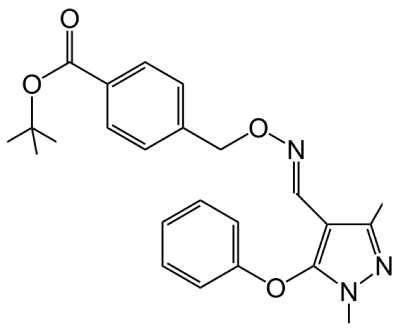
Figure 4 Fenpyroximate (Hivastan): a lesser known miticide registered as a miticide in America.
One might question the use of synthetics less on the ground of their ineffectiveness than on their leaving residues in beeswax and hive equipment and on their cost.
These synthetic miticides were selected partly on the basis of their low toxicity to vertebrates. Varroa has steadily acquired resistance to all the synthetics though Bavarol (flumethrin) and Apivar/Apritraz (amitraz) will likely work for a few years here in Australia. Based on the fact that they leave residues in beeswax, that mites are gaining a tolerance to their regular application and their sheer cost many European and north American beekeepers have abandoned their use.
The acid hit
The present failings of the use of natural oils most likely results from their ineffectual contact with mites and their short hive half life. Miscellaneous gear needed includes a respirator mask (for handing formic acid and fogging oxalic acid), a heating pad, thermometer, nitrile gloves, safety glasses, Swedish dishcloths, tongs, an electric fan, airtight storage containers, porous wooden (Canite) blocks, alcohol and bicarbonate of soda (for spilt acid cleanup). The list goes on, so it is hardly surprising that many beekeepers have stayed with the officially recommended products and simple to follow use procedures.
Our basic plan has been to circumnavigate the use of overly expensive arachnicides, to pursue brood break and drone/mite trapping practices and to focus on a four-pronged approach to treatment of hives that, left untreated, would succumb to an overdose of parasites. Our scheme employs:
(i) a twenty day oxalic acid treatment of single or double brood boxes. These use Swedish dishcloth strips saturated with 1:1 mix of oxalic acid and glycerine. The formulation differs from Aluen Cap in employing a cloth rather than cardboard matrix and in using a 1:1 formulation of oxalic acid and glycerine that Randy Oliver claims works better that commercial extended oxalic acid products that use a higher proportion of glycerine.
(ii) formic acid wick drip treatment employing a Nassenheider evaporator. The evaporator drip feeds 65% formic acid from a 250 mL reservoir onto an evaporation pad housed inside a shallow rim located above the brood nest. The setup of the Nassenheider evaporator is found at https://www.youtube.com/watch?v=L_1rCjODXk8
This application differs from the FormicPro (formic acid – polysaccharide gel) in the method of delivery. The advantage of using a wick drip system lies in the fact that the Nassenheider evaporator can be more closely dose-regulated and wicks can be changed to facilitate nucleus, single brood box and double brood box setups. The same ambient temperature conditions apply to both FormicPro and Nassenheider use.
(iii) oxalic acid fogging of single or double brood chamber colonies. A standard amount of acid (1-4g, but typically 2g) is applied through a dispenser to a hot (250 0C) element that injects a live stream formic acid cloud (through a nozzle) into the hive front entrance that is then briefly towelled up. A row of hives can be treated quickly (~30 seconds per colony) at any time of year other than when bees are tightly clustered; and
(iv) thymol (potentially thyme or carvacrol/oregano or sage oil) soaked porous wooden blocks positioned above corners of the brood nest so that the natural product is released slowly (~3 weeks). The registered application of thymol (Apiguard) differs in that it relies on natural evaporation of the crystals.
These treatments can be supplemented by quick action acid treatments to kill phoretic mites:
(i) oxalic acid dribble for swarms, shook bees, or broodless bees where the acid strength is adjusted based on colony condition (Oliver, 2023) and level of mite infestation. The scheme employs readily available oxalic acid dihydrate as an alternative to the registered Api-Bioxal kit; and
(ii) lactic acid (potentially other acids such as malonic acid) dribbled between or sprayed onto brood comb faces. Typically this would amount to a spring treatment and two autumn applications. The scheme is mainly advocated as an alternative to oxalic acid and thymol treatment.
At what cost
Off label organic miticides are relatively inexpensive but are otherwise the same chemicals as those registered for use. There are costs associated with equipment delivery, including evaporators for the acids and personal protective gear such as a respirator mask and nitrile gloves. Here are indicative materials requirements and sources ex transport and other costs (Table 2).
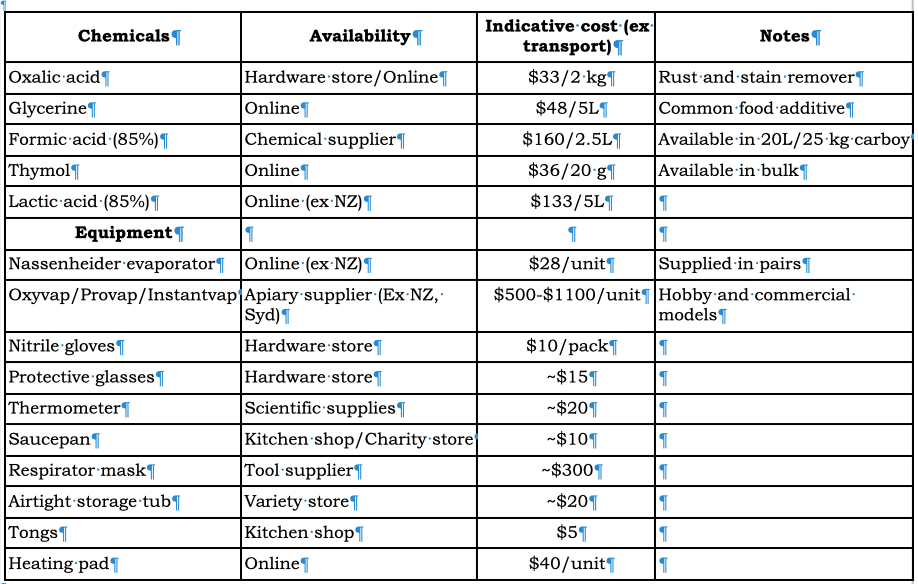
Table 2 Indicative availability and chemical cost. Chemicals are much cheaper per unit in bulk.
Closing notes
This review does not detail supplier names, procedures for handling and applying chemicals or recommend particular mite control procedures. Natural product applications are reviewed in Bee Buzz Box June 2025 Smite the Mite Part VII And then there were None.
Despite there being no evidence of build up of resistance to organic acids and thymol, I commend rotation of these treatments to minimise this risk. Each beekeeper should employ mite control measures they feel comfortable with and that they believe will be effective.
Due care should be exercise in handling formic acid and oxalic acids particularly in their vaporised states. Misapplication of organic acids and natural oils may or may not achieve their intended mite control so should be backed up standard simple alcohol washes to ascertain their effectiveness.
The chemicals identified for use in our scheme are identical to those contained in registered products and both formic and oxalic acids are available commercially free of additives. Please note that synthetic miticides not registered for treating beehives, but available off the shelf, typically contain adjuvants including emulsifiers and wetting agents that make them entirely unsuitable for varroa control.
Readings
Agrifutures Australia (2024). Varroa – Chemicals for treating varroa: Synthetic or naturally derived? https://honeybee.org.au/wp-content/uploads/2024/07/AGF575-Chemicals-for-treating-Varroa-S1V2-1.pdf
Conrad, R. (19 May 2025). Annual U.S. colony losses hit record high over winter of 2024-2025. Bee Culture https://beeculture.com/colony-loss-survey/
Garvey, K. (1981). The alcoholic snake. In Tales of my Uncle Harry. ABC Books, Sydney.
Good Time. (accessed 30 May 2025). Good Time: The Acid Hits. https://www.youtube.com/watch?v=MtYpWxmK4ag
Hernández-Rodríguez, C.S., Marín, Ó., Calatayud, F., Mahiques, M.J., Mompó, A., Segura, I., Simó, E. and González-Cabrera, J. (2021). Large-scale monitoring of resistance to coumaphos, amitraz, and pyrethroids in Varroa destructor. Insects 12(1):27. https://pmc.ncbi.nlm.nih.gov/articles/PMC7824307/
Holmes, M. (12 December 2024). Varroa – Chemicals for treating varroa: Naturally derived or synthetic? https://extensionaus.com.au/professionalbeekeepers/chemical-treatments-for-varroa-synthetic-or-naturally-derived/
Locke, G. (8 May 2025). More Varroa checks following Bavarol. Korora bees are looking strong and healthy. https://www.youtube.com/watch?v=WjfN8SeXAyE&lc=UgxTs1U7s-4ErVhLhBd4AaABAg.AHvr2_dNiEPAHw5Yu0whwK
Oliver, R. (2023). Oxalic acid treatment table. Scientific Beekeeping. https://scientificbeekeeping.com/oxalic-acid-treatment-table/
Oliver, R. (May 2025). Is our party winding down? American Bee Journal 165(5):551-559.
Oliver, R. (June 2025). A new era in mite management. American Bee Journal 165(6):661-668.
United States Environmental Protection Agency (6 June 2025). EPA-registered pesticide products approved for use against Varroa mites in bee hives. https://www.epa.gov/pollinator-protection/epa-registered-pesticide-products-approved-use-against-varroa-mites-bee-hives
